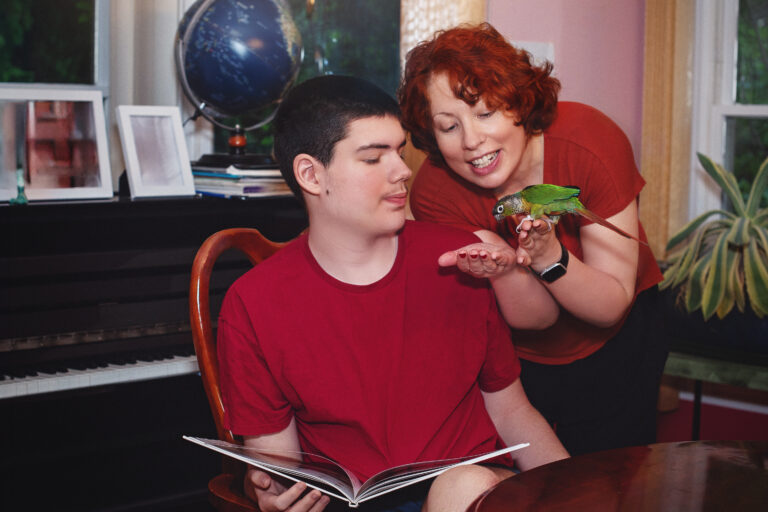When a child or loved one is diagnosed with autism, families often feel both hopeful and overwhelmed. They may ask questions like, ‘What is an intervention for autism?‘ What are the goals? Which approaches are most effective?
At Change Institute, we guide families through difficult decisions around interventions, care management, and supportive services. While our work is best known for its compassionate interventions in addiction and recovery, our Breakfree Method applies across all areas where families seek change: it is invitational, evidence-based, and rooted in compassion.
Below, we’ll explore the most common questions about autism interventions, highlight practical approaches, and offer insight into how supportive, family-centered guidance can make all the difference.
What Is an Intervention for Autism?
An intervention for autism might include a structured assessment or testing, therapy, or an approach designed to help those on the spectrum improve communication, social skills, learning, or daily living abilities.
Interventions are not one-size-fits-all. Every child or adult with autism has unique strengths and challenges. The most effective programs are individualized, evidence-based, and supported by family involvement. The value of early intervention cannot be overstated with someone who is neurodivergent or autistic, so be on the lookout for signs and symptoms to cue the help.
At Change Institute, we emphasize an invitational approach, meaning support is offered with dignity and inclusion, not confrontation or pressure. This ensures that intervention leads with respect for each person and the family system, however that looks.
What Are the 3 Types of Interventions Used With Autism?
Families often hear about various therapy models and wonder which ones are most effective. Broadly, the three main types of autism interventions include:
1. Behavioral Interventions
- Applied Behavior Analysis (ABA) is the most well-known.
- Focuses on reinforcing positive behaviors and reducing harmful or limiting behaviors.
- Backed by decades of research, but it should always be adapted to the individual.
2. Developmental Interventions
- These focus on supporting natural learning and relationship-building.
- Examples: DIR/Floortime, Relationship Development Intervention (RDI).
- Emphasize interaction, emotional connection, and developmental milestones.
3. Educational Interventions
- Structured teaching approaches, such as TEACCH (Treatment and Education of Autistic and Related Communication-Handicapped Children).
- Often integrated in school settings with individualized education programs (IEPs).
Change Institute perspective: Families often need help navigating these options, identifying the right fit, and creating a plan that supports the whole household.
What Are Developmental Interventions for Autism?
Developmental interventions focus on helping a child build skills in communication, play, and relationships through natural interactions. Instead of teaching isolated skills, these interventions consider the whole child and their progress across multiple milestones.
Examples include:
DIR/Floortime
Parents and therapists join the child in play to encourage social and emotional growth.
RDI (Relationship Development Intervention)
Focuses on flexible thinking and building authentic social connections.
Speech and occupational therapy often incorporate developmental strategies to support communication and daily life skills.
At Change Institute, we appreciate how these approaches align with our philosophy: “Hope is a strategy. Love is a plan.” Interventions rooted in connection and compassion can be transformative.
What Are Intervention Goals for Autism?
The goals of autism intervention vary by individual but generally include:
Improved communication
Building verbal, nonverbal, or assisted communication skills.
Social development
Learning to interact, share, and build relationships.
Independence in daily life
Skills like dressing, eating, and personal hygiene.
Reducing behaviors that limit growth
Such as self-injury, aggression, or repetitive actions.
Enhancing learning
Supporting academic and problem-solving skills.
Above all, intervention goals should promote dignity, independence, and quality of life. Families deserve to feel empowered, not overwhelmed, by the process.
What Is the Best Early Intervention for Autism?
Research indicates that early intervention, initiated as soon as a diagnosis is made —typically before age 3 — yields the most favorable long-term outcomes. The “best” intervention depends on the one being helped, but common evidence-based early interventions include:
Early Start Denver Model (ESDM)
A play-based, relationship-focused approach has been shown to improve language and cognitive skills.
ABA (Applied Behavior Analysis)
When adapted with sensitivity and compassion, it can help children develop communication and reduce limiting behaviors.
Parent training programs
Equip families with tools to reinforce progress at home.
Brad Lamm often says, “We don’t take no for an answer to help and support — lovingly.” Applied here, it means families never need to feel powerless; there are always opportunities to invite growth, healing, and connection.
What Is the Most Effective Intervention for Autism?
There isn’t a single intervention that works for every person with autism. However, the most effective programs share common traits:
- Evidence-based
- Individualized to the person’s strengths and needs
- Involving family and caregivers
- Focused on long-term skill-building, not short-term fixes
Many studies highlight ABA as one of the most effective interventions when adapted with compassion. However, equally important are developmental and family-based approaches, which ensure the person is supported holistically.
At Change Institute, our role is to help families cut through the noise, align on values, and choose pathways that honor the dignity of their loved ones.
Which Intervention for Autism Is Considered Most Effective?
Among experts, intensive, individualized programs that start early are considered most effective. This can include ABA combined with speech therapy, occupational therapy, and developmental play models.
But here’s the key: the most effective intervention is the one that matches the individual’s needs and the family’s capacity. A compassionate plan with realistic, achievable goals leads to sustainable progress.
Change Institute helps families develop exactly that, a roadmap for intervention that balances clinical evidence with lived experience.
When to Seek Professional Guidance
Parents often ask: “How do I know if I need professional help?” Signs include:
- Feeling overwhelmed by choices and recommendations
- Struggling to coordinate between schools, therapists, and doctors
- Needing support for family dynamics and stress related to care
- Wanting to avoid outdated, shame-based approaches
That’s where Brad Lamm and Change Institute come in. Our Recovery Care Management services help families build sustainable plans with clarity, compassion, and confidence.
How Change Institute Supports Families
While the Change Institute is nationally recognized for its interventions in addiction and behavioral health, our Breakfree Method principles apply to all forms of crisis and care navigation, including autism interventions.
Here’s how we support families:
Case Management
Coordinating services, providers, and resources.
Family Coaching
Teaching families tools to manage stress and support their loved ones.
Professional Consulting
Helping families choose programs and interventions aligned with their values.
Workshops & Training
Building capacity for long-term resilience.
Our message is simple: families don’t have to do this alone. Compassionate, invitational guidance changes everything.
Final Thoughts — Invitation, Not Confrontation
So, what is an intervention for autism? It’s a structured way to support growth, communication, and independence. The most effective programs are individualized, evidence-based, and rooted in compassion.
At Change Institute, we believe interventions should never be about control or confrontation. They should be about invitation: inviting families into clarity, inviting individuals into connection, and inviting hope into the process.
If you’re navigating the world of autism interventions, you don’t have to figure it out alone. Brad Lamm and Change Institute are here to guide you.
Schedule a Complimentary Consultation with Change Institute to learn more about recovery coaching and compassionate interventions.
Explore Brad Lamm’s books and video library for practical, hope-filled tools.
Sign up here to receive a free excerpt of “How to Help Someone You Love” by Brad Lamm.








